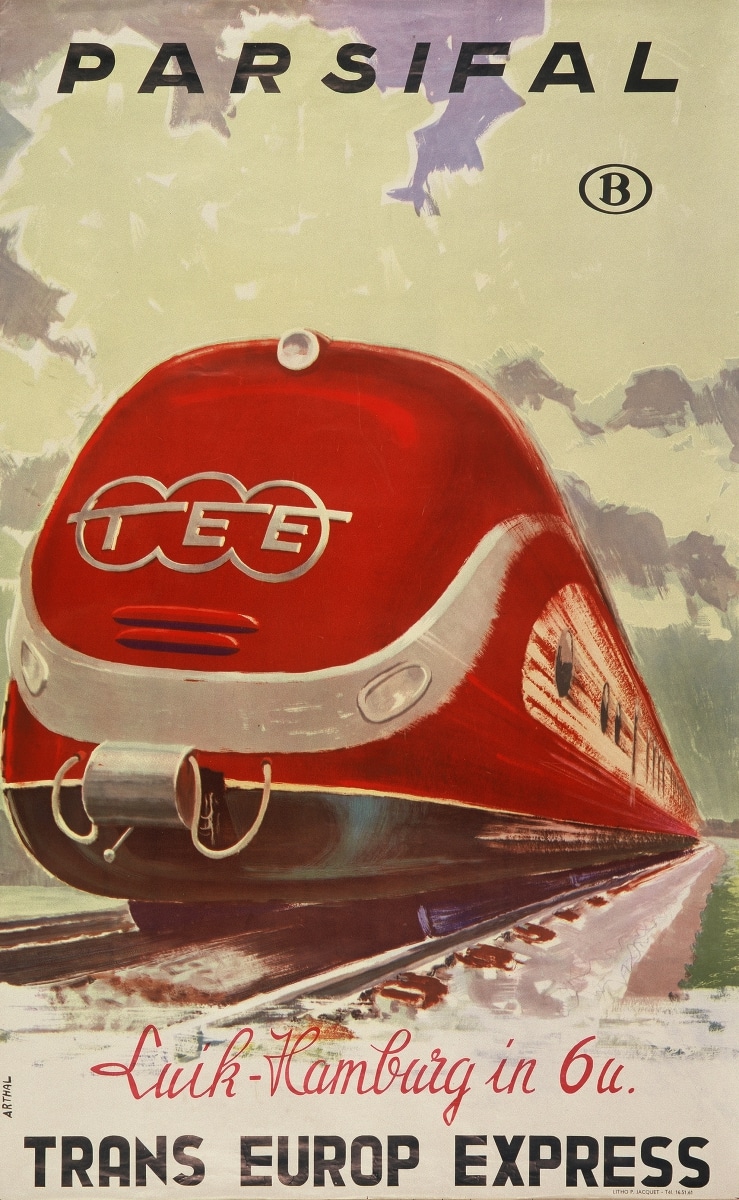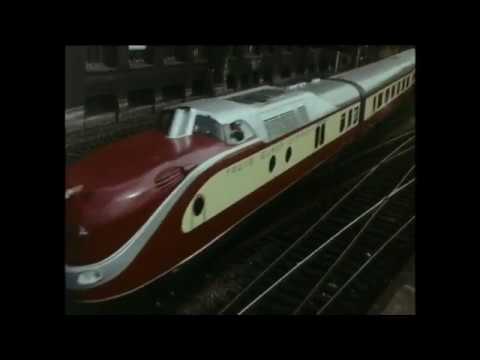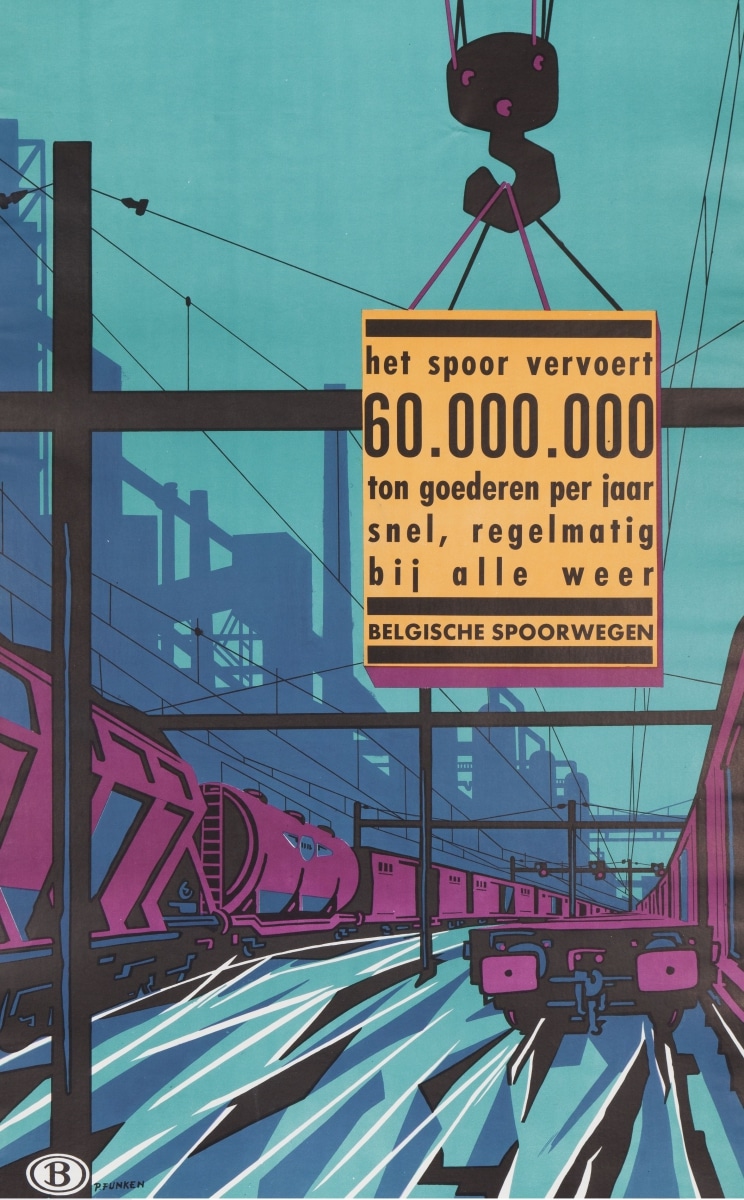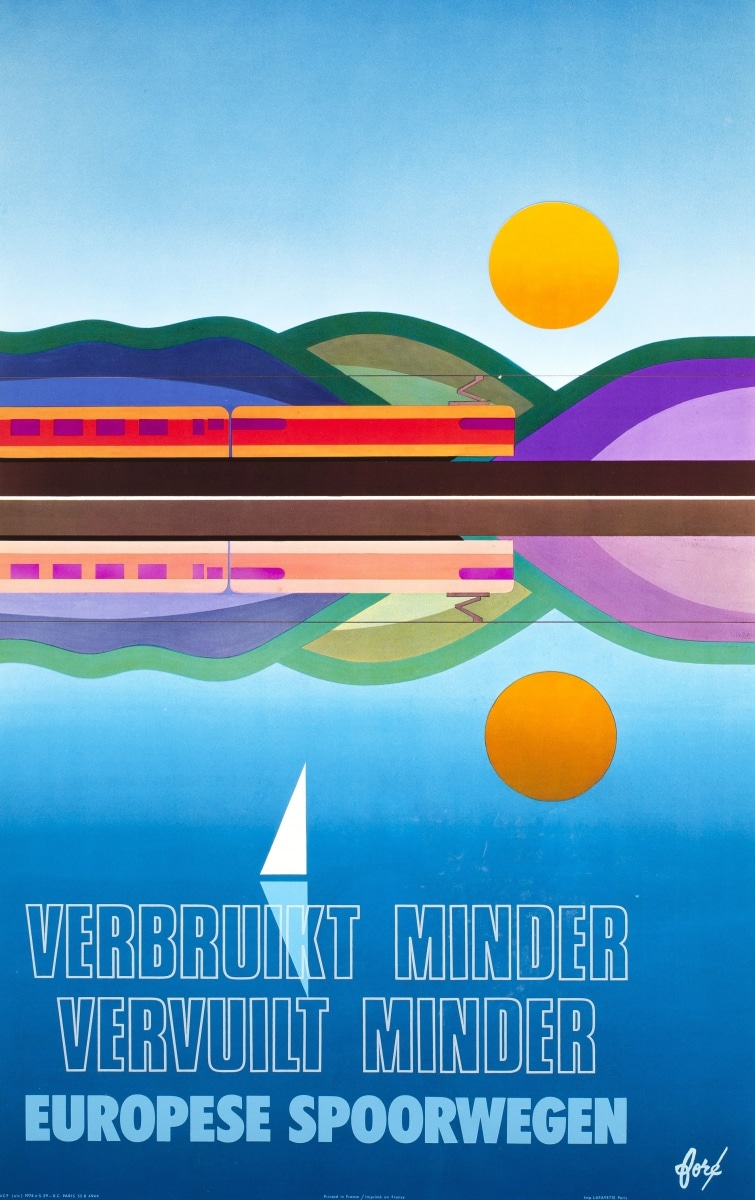To resist the rapid rise in air travel, a new fast and comfortable cross-border daytime train was launched on June 2, 1957 known as Trans Europ Express (TEE). No time was lost at the borders to switch locomotives or with police and customs’ formalities. Brussels became a hub in the TEE network. These trains were only accessible to passengers with a first class ticket plus a supplement.
Originally only diesel trains were used, since the large European railway routes were not yet entirely electrified. The trains could be recognised by their striking branding in red and cream and by the TEE logo. Even in the early days they reached speeds of up to 140 km/hour.
In 1961, the Swiss Federal Railways SBB set a world record with the first electric trains to operate on four different voltages. They achieved a speed of 160 km/hour. Later, other networks joined in with electrical trains that reached up to 200 kilometres per hour.
As from 1975, the number of passengers on the TEE connections went into rapid decline. The use of expensive luxury trains was considered outdated. On May 31, 1987, the EuroCity network was introduced, with high-quality international trains accessible to first and second-class passengers.




